Cauliflower, a versatile and nutritious vegetable, has long been a favorite in cuisines worldwide. But as urbanization grows and space for traditional farming decreases, innovative solutions are emerging to meet global demand. One such breakthrough is Japanese cauliflower farming technology, which allows for high-yield, efficient cultivation — even in unconventional spaces like rooftops.
This method is particularly fascinating with inline purple cauliflower, a visually striking variety that is gaining popularity for both its aesthetic appeal and nutritional benefits. In this blog post, we’ll explore how cauliflower farming is evolving with Japanese technology, rooftop cultivation, and inline planting methods, offering a sustainable, productive, and visually stunning approach to urban agriculture.
Why Cauliflower Farming Needs Innovation
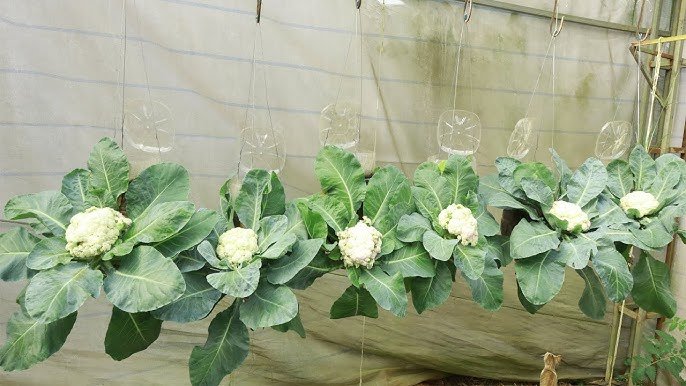
Cauliflower is a cool-season crop that requires careful management to produce dense, high-quality heads. Traditional farming faces several challenges:
- Climate sensitivity: Cauliflower is highly sensitive to temperature fluctuations and requires precise growing conditions.
- Space constraints: Urban areas lack large plots for conventional farming.
- Labor-intensive processes: From transplanting to harvesting, cauliflower farming requires significant manpower.
- Pest and disease management: Pests like aphids and diseases such as black rot can drastically reduce yields.
These challenges have spurred the adoption of technology-driven solutions, particularly inspired by Japanese farming practices, which emphasize precision, efficiency, and sustainability.
Understanding Japanese Cauliflower Technology
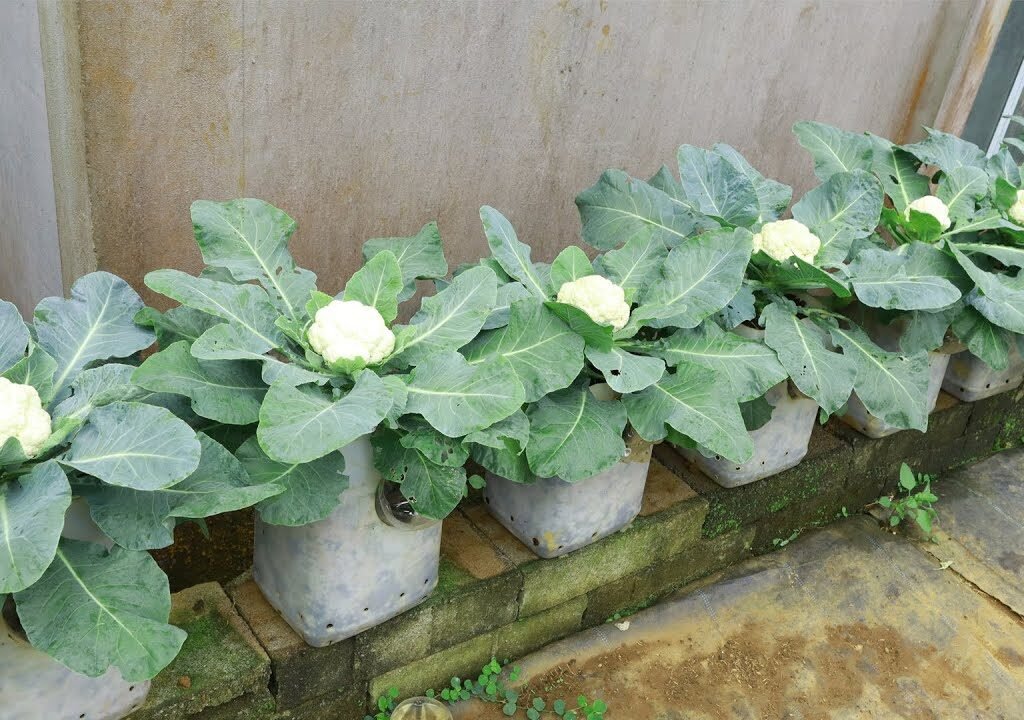
Japanese cauliflower farming technology is a set of advanced techniques designed to optimize growth, yield, and quality. Key features include:
- Inline Planting Systems:
- Plants are arranged in straight lines (inline) for uniform growth.
- Ensures better air circulation, sunlight exposure, and easier access for maintenance.
- Reduces overcrowding, resulting in compact, dense cauliflower heads.
- Controlled Environment Rooftop Farming:
- Uses rooftop spaces in urban settings to grow cauliflower without soil contamination.
- Incorporates temperature control, shading nets, and drip irrigation for precision watering.
- Nutrient Management and Fertigation:
- Fertilizers are delivered through automated drip systems to ensure uniform nutrient distribution.
- Soil or soilless media is enriched with organic nutrients, minimizing chemical dependency.
- Advanced Pest and Disease Monitoring:
- Sensors and cameras detect early signs of infestation or disease.
- Preventive measures can be applied quickly, reducing crop loss.
Step 1: Selecting the Right Variety
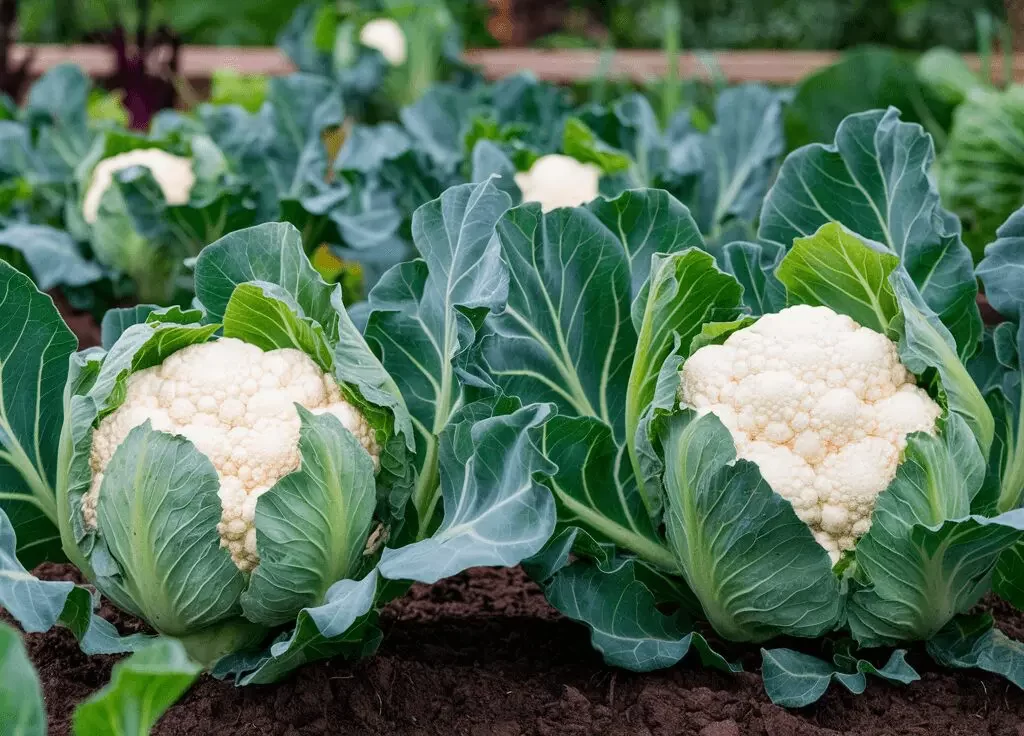
For rooftop and inline cultivation, purple cauliflower is particularly popular due to its vibrant color and high anthocyanin content, which offers additional antioxidant benefits.
Selection Tips:
- Choose disease-resistant and compact varieties suitable for container or rooftop farming.
- Purple cauliflower grows well in cool climates (15°C–20°C) but can also adapt to controlled rooftop environments.
Step 2: Preparing the Rooftop Garden
Rooftop cultivation requires careful preparation to ensure structural safety, soil depth, and proper drainage.
- Weight Management: Use lightweight soil media or hydroponic systems to reduce load on the roof.
- Containers: Use raised beds, large pots, or grow bags with proper drainage holes.
- Sunlight and Shade: Install shading nets to prevent scorching in high-temperature climates.
- Irrigation: Set up drip irrigation lines connected to timers or smart controllers.
Proper preparation ensures plants receive sufficient water, sunlight, and nutrients while protecting the rooftop structure.
Step 3: Inline Planting for Maximum Yield
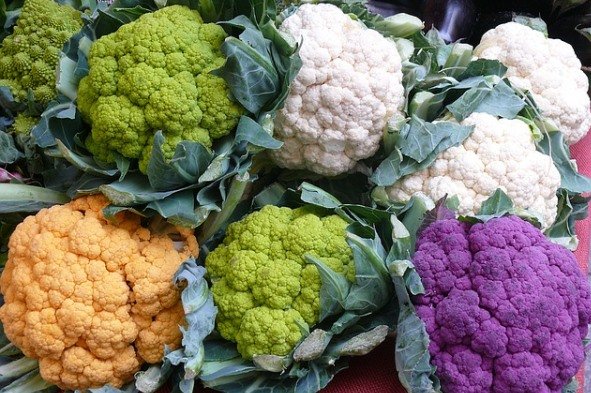
Inline planting is a hallmark of Japanese cauliflower technology.
Advantages:
- Uniform spacing ensures each plant receives adequate sunlight.
- Facilitates air circulation, reducing fungal infections.
- Makes maintenance, pest control, and harvesting easier.
Implementation:
- Maintain 45–60 cm between rows and 30–40 cm between plants.
- Use markers or strings to maintain straight lines for precision.
- Consider vertical supports if using trellis systems for protection in windy rooftop environments.
Step 4: Nutrient Management and Fertigation
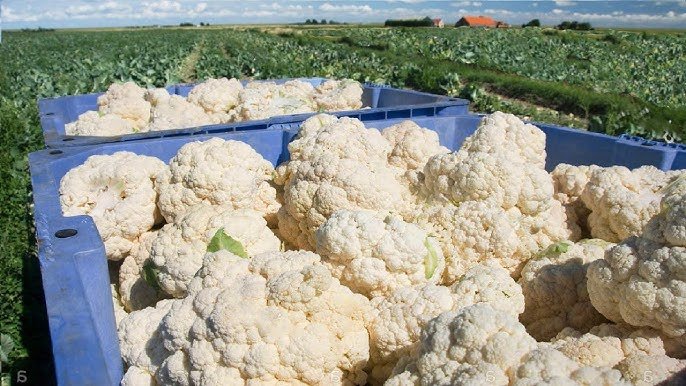
Cauliflower is a nutrient-demanding crop. Japanese methods use fertigation, delivering water and nutrients directly to plant roots through drip systems.
Key Nutrients:
- Nitrogen (for leaf growth)
- Phosphorus (for root and head development)
- Potassium (for overall plant health and disease resistance)
- Calcium and Magnesium (for strong heads and vibrant color)
Fertigation Tips:
- Monitor nutrient concentration with sensors.
- Apply nutrients in small, frequent doses rather than a single heavy application.
- Organic alternatives like compost tea can enhance soil health and reduce chemical usage.
Step 5: Pest and Disease Management
Despite controlled environments, cauliflower is still susceptible to pests such as aphids, whiteflies, and caterpillars, along with diseases like black rot.
High-Tech Solutions:
- Install IoT sensors to monitor humidity, leaf moisture, and temperature — key factors in pest proliferation.
- Use camera-based AI systems to detect early pest infestations.
- Apply biological controls (ladybugs, predatory insects) or organic sprays as preventive measures.
Preventive management minimizes crop loss and reduces reliance on chemical pesticides.
Step 6: Harvesting Purple Cauliflower
Harvesting is critical for quality. Japanese techniques emphasize timely and precise harvesting to maximize taste and appearance.
Tips for Optimal Harvest:
- Harvest when the heads are compact and firm, before they start loosening or flowering.
- Cut heads with a portion of surrounding leaves to protect the curd.
- Avoid delays, as delayed harvest reduces both color intensity and flavor.
With inline and rooftop systems, harvesting is easier and less labor-intensive, especially if plants are arranged at accessible heights.
Step 7: Post-Harvest Handling and Processing
To maintain freshness, cauliflower undergoes careful post-harvest handling:
- Washing: Remove dust and any pest residues.
- Cooling: Hydro-cooling or cold water baths quickly reduce field heat, extending shelf life.
- Sorting: Heads are graded based on size, color, and density.
- Packaging: Automated packaging systems reduce handling damage and prepare cauliflower for distribution.
This streamlined process ensures consumers receive visually appealing, fresh, and nutritious cauliflower.
Advantages of Japanese Rooftop Cauliflower Farming
- Space Efficiency: Urban rooftops transform into productive farms.
- Water Efficiency: Drip irrigation and fertigation reduce water usage.
- High Yield and Quality: Inline planting and nutrient management produce dense, healthy heads.
- Eco-Friendly Practices: Reduced chemical use and resource optimization promote sustainable farming.
- Urban Food Security: Provides fresh, locally grown produce in cities with limited farmland.
Challenges and Solutions
Challenges:
- Rooftop weight limitations
- Weather extremes affecting open rooftop farms
- Initial investment in technology
Solutions:
- Use lightweight growing media or hydroponics to reduce load.
- Incorporate shading, windbreaks, and rain shelters.
- Begin with pilot setups to test technology and optimize costs.
With careful planning, rooftop cauliflower farming is both feasible and highly productive.
Future Prospects
The future of cauliflower farming lies in smart urban agriculture, combining Japanese precision farming techniques with digital technologies like AI, robotics, and IoT monitoring. Potential innovations include:
- Automated transplanting and harvesting robots for urban farms.
- Vertical hydroponic systems to further maximize space.
- AI-powered predictive analytics for nutrient optimization and pest forecasting.
These advancements will make urban cauliflower farming more accessible, efficient, and sustainable — transforming rooftops into vibrant green spaces that feed city populations.
Conclusion
Japanese cauliflower technology and rooftop farming have redefined how we grow this beloved vegetable. From inline planting and advanced fertigation to high-tech pest control and automated harvesting, every stage is optimized for maximum efficiency, yield, and quality.
Purple cauliflower adds a stunning visual appeal to these modern farms, providing not just nutrition but also a unique culinary experience. Urban rooftops are no longer just unused spaces; they have the potential to become productive, sustainable, and innovative farms that supply fresh vegetables year-round.
By embracing these techniques, farmers can overcome traditional challenges, urban dwellers can enjoy fresh produce, and society can take a significant step toward sustainable urban agriculture.
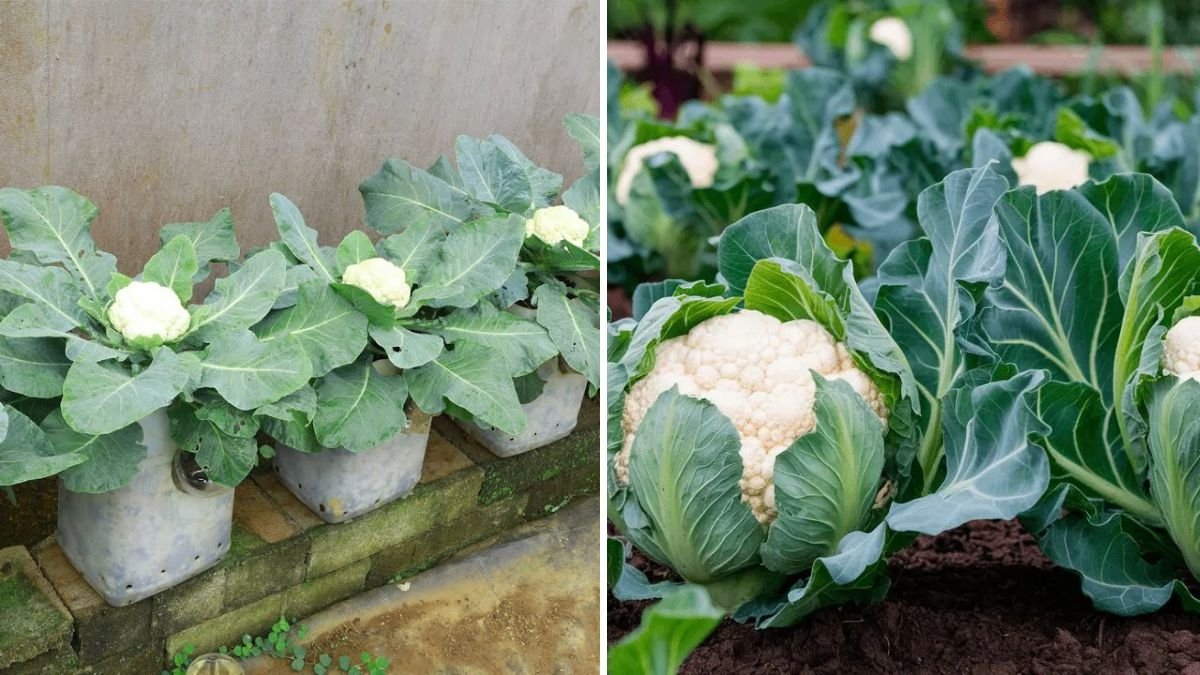





Leave A Comment